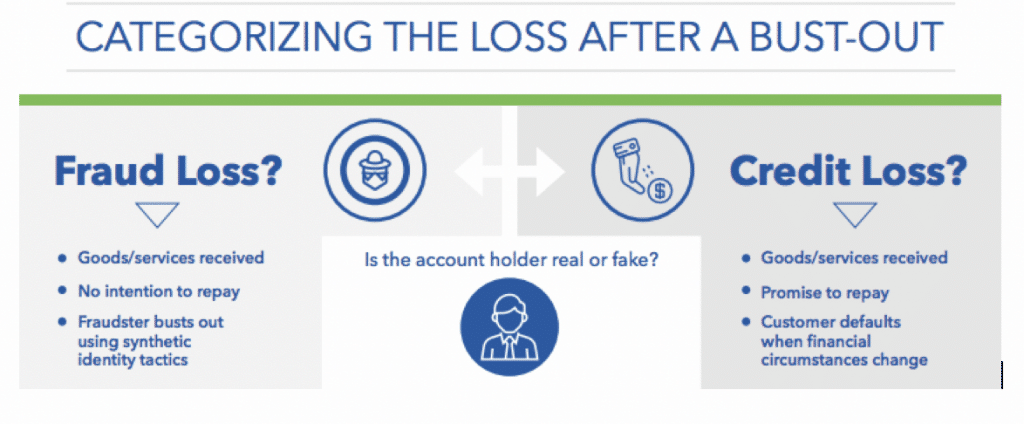In this post, we again address synthetic identity fraud and wrap up our series by examining the effects and ramifications of this type of deception.
To review, synthetic identify fraud differs from other types in that it combines authentic personal information with fabricated datae for the purposed of defrauding financial, insurance, consumer and health care businesses.
The ease and low cost of creating synthetic identities contributes to the widespread impact of this type of fraud. Sophisticated crime rings can leverage multiple tactics at scale to cultivate synthetic identities, including using fake addresses, creating sham businesses and forming relationships with collusive merchants to cash in.
Synthetic identities can be nurtured for months – and sometimes, years – to achieve higher credit limits. Fraudsters cultivate accounts by making small purchases and paying them off to build good repayment histories. Before a bust-out — ‘busting out’ refers to the maxing out the line of credit with no intention to repay — occurs, these sleeper accounts help add credibility to a synthetic identity to boost its borrowing and spending power.
Financial institutions generally bear the losses caused by bust-outs. Financial losses due to synthetic identity fraud often are incorrectly categorized as credit losses, as the synthetic identities appear on the surface to be actual non-paying customers.
Inconsistent categorization is exacerbated by a lack of common industry definitions and classification for synthetic identity fraud. In addition, when an institution attempts to collect funds from the synthetic identity, there is no real person to find – and it may not be considered cost-effective to investigate further.
It is vitally important to categorize losses correctly. If a financial institution flags synthetic identity fraud activity, it can use the information to track linked accounts (for example, other accounts with the same SSN, name, or address) or other associated identities. If incorrectly flagged as a credit loss, the credit bureaus remove the delinquency after seven years and the fraudsters can attempt to re-use the same synthetic identity to rebuild credit and bust out again.

Payments and fraud experts indicate a need for greater awareness of its the scope and scale of synthetic identity fraud, as well as additional information sharing across the payments industry. As payments stakeholders share more information about trends, behaviors, threats and best practices, they can improve the industry’s collective synthetic identity fraud detection and mitigation practices. Information sharing is particularly important for smaller financial institutions, which may not have the same technology or personnel resources as larger companies.
However, financial institutions may remain hesitant to share information with other industry stakeholders. While laws and regulations require companies to report certain suspicious behaviors related to money laundering and terrorism financing, they are not usually required to provide the same information about losses attributed to fraud. Financial institutions may fear losing a market advantage by revealing too much to competitors about their practices. They also may be concerned about reputational risk, data privacy and security requirements. Despite these challenges, many payments and fraud industry experts believe the benefits of information sharing across the industry outweigh these perceived drawbacks.
SOURCE
